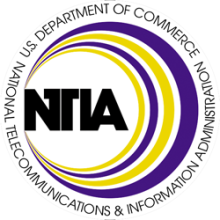Comments on Round Two for Broadband Stimulus
I have just submitted comments from the Institute for Local Self-Reliance to both the the National Telecommunications and Information Administration (NTIA) and the Rural Utilities Service (RUS) regarding suggestions for rules in round two (the last round) of the broadband stimulus programs -- the Broadband Technology Opportunities Program (BTOP - administered by NTIA) and Broadband Initiatives Program (BIP - administered by RUS).
The two agencies previously posted a joint request for information [pdf] on lessons learned from the first round:
RUS and NTIA released a joint Request for Information (RFI) seeking comment on further implementation of the Broadband Initiatives Program (BIP) and the Broadband Technology Opportunities Program (BTOP). Comments must be received by November 30, 2009. The input the agencies expect to receive from this process is intended to inform the second round of funding.We offered five pages of comments, responding directly to the questions - I am led to believe that this is the preferred way of responding to such requests for information. Thus, the format consists of a short introduction and then questions (in italics) followed by our responses. Unsurprisingly, we generally encourage NTIA and RUS to better serve the public interest by requiring more transparency in the second round. We also call on them to stop accepting "advertised" speeds in their broadband definition and use actual delivered speeds in order to ensure communities are not discouraged from applying because their incumbent providers exaggerate the capabilities of their network. Most importantly, we call on NTIA and RUS to encourage public sector entities to apply by ceasing to consider all private networks to operate in the public interest. As we previously documented here, NTIA subverted the intent of Congress with the rules from round one. The rules should prefer public and nonprofit entities as they are directly accountable to the public and should therefore be the first in line to receive public money for essential infrastructure. As the number of applications to NTIA and RUS was far higher than expected, making the public interest requirements stronger should be a natural response.



